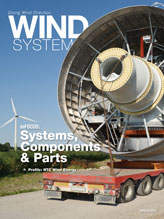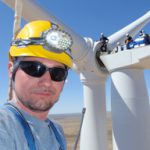Tell us about SparkCognition.
SparkCognition is an artificial intelligence company dedicated to ensuring safety, reliability, and maintenance of the industrial Internet. We build algorithms and apply them in different use cases like predictive maintenance, predictive analytics, and cybersecurity. We combine both cyber-physical Operational Technology (OT) with Information Technology (IT) where we use products like SparkPredict, a predictive analytics platform, and SparkSecure, a cybersecurity platform.
By being able to look at data from IT/OT convergence, we’re able to find unique patterns within that information to provide advanced operational insights to our clients.
What are your duties with SparkCognition?
I am the senior director of Customer Success and Partnerships. I mostly focus on SparkPredict, our predictive maintenance and predictive analytics product line. Previously, I worked for about 15 years for National Instruments, a global leader in test-and-measurement and embedded hardware, and I ran their condition-monitoring division.
I have an extensive background in predictive analytics, predictive maintenance, and vibration monitoring — how one can find health-related problems in a piece of machinery before it breaks down. What I was seeing was that data aggregation was quickly becoming a valuable commodity.
Sensors and technology are getting to the point where getting data isn’t the problem anymore. Studies show less than 5 percent of all data is analyzed. So the data is the commodity, and the analytics of that data is where the real value exists, and that’s what we do at SparkCognition.
What is SparkPredict?
SparkPredict is a software product that uses our proprietary algorithms to produce predictive analytics on a variety of critical industrial machinery. We focus on various industrial assets such as gas turbines, industrial pumps, wind turbines and their components, oil and gas machinery, aviation equipment, and manufacturing systems.
The SparkPredict platform takes a data agnostic approach. That’s beneficial because it’s not scalable to hire an expert on oil and gas pumps, and an expert on jet engines, and an expert on wind turbines, and an expert on aviation equipment, and other experts in the industries we serve. We hire some people with some industrial expertise, but in general, we let the algorithms take a data agnostic approach to create value from the data.
What is a data agnostic approach?
It means we don’t have a preconceived approach to how we tackle a given problem. Some customers or competitors use physics-based approaches where you have to have ingrained knowledge about how each of the components work, about what each of the components are, and what their interactions are with each other. You have to do modeling to build a physics-based approach, so you have to have a very strong understanding about how that asset operates.
We take a different approach. Give me all the data you have, and our algorithms will automatically build models that immediately start providing insight into that wind turbine. So you don’t need an expert to build a model. You don’t need a physical model. We take the data and — without knowing what these sensors are — start providing insights into it immediately.
Our techniques can also show the customer the specific component that was contributing the most to this failure mechanism or that failure mode on the turbine.
How is SparkPredict revolutionizing turbine O&M?
We’re revolutionizing the industry because we can immediately provide accurate, meaningful results to our customers from their data.
Other vendors use the aftermarket things like vibration sensors and a whole bunch of condition-monitoring equipment. We’ve actually been able to make those predictions based on just the 30 sensors on the turbines themselves. We don’t need to know what bearings were installed on that turbine. We are able to provide clients what we call a risk index, which gives them up to 65 days advanced, and accurate, notice of an impending failure.
If you look at a wind farm and the turbines we’re monitoring, our technology allows our customers to make better decisions regarding maintenance. They don’t have to be as reactive. With SparkPredict, they are proactive.
They may look at our risk index and see that a turbine is starting to go bad. But rather than go out and fix it immediately, they can look across a particular wind farm and see that four or five others look like they will eventually go bad. So then you can amortize your repair costs.
It takes a lot of time and money to get these very high-dollar maintenance cranes to many wind-farm locations. And if you do it reactively and just fix one turbine, and then in three days the next one fails, it’s a continual expense. If you can amortize the cost of maintenance over a farm and fix, for example, five wind turbines when the crane is rented, you can dramatically lower your O&M cost.
How does it predict wind-turbine failure?
We look at about 30 sensors every 10 minutes, which is plenty of time for the dynamics of how these things change. And then on a daily basis, we provide a risk index. In the risk index, you have a couple of threshold levels. For simplicity, think of it as your yellow alarm and your red alarm. We’ve been able tell customers with 85-percent accuracy on the yellow that they have about 70 days to fix a problem before it’s going to fail.
Once it gets into the red area, we can give them a prediction of 30- to 35-days advance notice with 95-percent accuracy.
Can you talk about how your algorithms work?
The customer provides us data, and our algorithms build models based on that information. Within that automated model-building processor, there are a couple of things that are going on. We don’t necessarily apply one modeling or one data science technique. For each different data set, we use various techniques that get the most accurate results.
So one of the things we do is an ensembling technique that looks at a whole bunch of standard algorithms as well as some that we’ve developed, and we figure out which is the most applicable algorithm that gives us the best result.
And as part of that, we take features — such as the 30 features on the turbine like bearing temperature, blade angle, power output — and we also do some feature engineering, which looks at second-, third-, and fourth-order effects within those features. Because it’s a computer and not a human, those features can be expanded from 30 to 300.
How was turbine failure predicted in the past?
If you really want to go back to the Stone Age, and for many, that is unfortunately their modus of operation, we’re talking about “run to failure” operations. And that is where some organizations still operate.
Some people employ condition-based monitoring where they go out once a quarter or once every six months, and they take some simple measurements and then they compare those to measurements taken previously.
Then you’ve got the predictive side — where we are — where we’re continually monitoring this information. So we’re taking real-time information and making predictions.
And then there’s what I call the next revolution — which we have expanding experience in — which is prescriptive analytics. So the idea is that we’re using technology called natural language processing where we can consume error codes; we can consume maintenance manuals; we can consume work order histories, and we apply analytics and prediction to those. So when we say something’s going to fail, we can actually tell the customer, “Here’s how you fix it; here’s the parts you’ll need on hand; these parts need to be ordered, etc.”
You work with some of the largest wind companies. How do you approach them with your products?
We started with our network. In the earliest days, our CEO and our VP of Market Development simply reached out to their network. We had investors who also have vast networks. From there, once we had a couple of good-use cases, we used that for direct marketing. We started with the AWEA network. We did industry-specific marketing. We have a sales unit specifically focused on wind. And then there are referrals.
The wind industry isn’t a very large community, and, for the most part, it is already educated in the benefits of predictive analytics and has been at it for some time. They still have people using the old physics-based approach, but as a whole, the industry is already fairly educated on the potential of the technology. So when we show up with the best technology, and we’re able to show how it’s so much better, then the adoption rates are pretty quick.
![]() (512) 956-5491
(512) 956-5491
![]() www.sparkcognition.com
www.sparkcognition.com
![]() /sparkcognition
/sparkcognition
![]() SparkTube
SparkTube








































